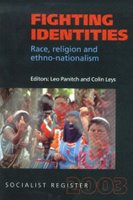Pre-1990 ‘Democratic’ Experiments in Nepal
THE EVOLVING PATTERN
Pratyush Chandra
ML INTERNATIONAL NEWSLETTER (SEPTEMBER-OCTOBER, 2005)
“Democracy refers to a system of governance in which the elite elements based in the business community control the state by virtue of their dominance of the private society, while the population observes quietly. So understood, democracy is a system of elite decision and public ratification. Correspondingly, popular involvement in the formation of public policy is considered a serious threat. It is not a step towards democracy; rather, it constitutes a ‘crisis of democracy’ that must be overcome.”(1)
Recently, political developments in Nepal have started getting considerable attention throughout the globe. The past negligence has been partly due to reading of the Nepalese situation as inherent in the so-called global process of democratisation triggered by the collapse of the Soviet Union. Even the stark instability of the Nepalese democracy did not attract attention as it was thought to be a general characteristic of what was happening in all the newly ‘democratised’ nations, and was considered to be a birth pang. But it is commonly forgotten that this birth pang of democracy in Nepal is tremendously long drawn. In this short survey of pre-1990 ‘democratic’ experiments in Nepal, I wish to indicate a recurring pattern of ‘royal regression’ (2) accompanying these experiments, which seeks to de-legitimise the democratic aspirations of the people of Nepal, and all in the name of democracy. It shows that what followed after 1990 was scarcely different. Every time there is an increased people’s assertion from below, emergency measures are taken to overcome the ‘crisis of democracy’. Unlike advanced bourgeois democracies, which have created numerous self-sustaining mechanisms of dealing with such crises by reducing militant opposition to debates and lobby groups, the democratic farce in Nepal is quite evident at the wake of continuous refusal of the downtrodden classes to be reduced in that manner. Hence, Nepal faces a perpetual ‘crisis of democracy’.
Episode 1: 1951 Democratic Revolution
Nepal’s flirtation with democracy has been continuous since the fall of Ranas in 1951. The Democracy Day that is commemorated every year on Feb 18 was in fact the day in the year 1951 when King Tribhuvan was reinstated with the help of India. It was the day that marked the transfer of absolute power from the dynasty of Prime Ministers to that of the Kings. It so happened that after the withdrawal of the British from the Indian soil, the Ranas of Nepal, the unique dynasty of Prime Ministers found themselves without any support in the subcontinent and faced an energised force of insurgents, whose leadership was trained in the Indian Freedom Struggle. Sensing the insecurity of the Ranas, King Tribhuvan found it opportune to gather India’s support to buy off the lost glory of the Shahs, the dynasty of the Kings. The Indian rulers (still struggling to outmanoeuvre the Communist revolt against Nizam, the democratic revolt against Hindu royalty and landlordism in Kashmir) were too ready for such a deal, as they were alarmed by growing radicalism among insurgency with the birth of the Nepalese Communist Party (in the year of the great Chinese Revolution) and evolving socialistic tenor of a section within the Congress. Hence, this “Delhi Compromise established the palace as paramount over a basically unchanged state machinery and class regime and subordinated the Ranas to the palace within a cabinet consisting of a combination of the old rulers and the compliant leadership from among the insurgents (the insurgent leadership was nearly all from landholding families of the old regime as well).”(3)
Nothing changed except the promise for a constituent assembly, which remains unfulfilled to this day. And of course, neighbouring the theatre of a continuous revolution, China, Nepal could be sold off as a strategic location to check the spread of socialism in the subcontinent. The American aid came showering in – “this began the creation of a whole class of commission agents and contractors who took their tithe of the foreign aid… [Further] Indian advisors arrived to expand India’s corrupt and unwieldy colonial bureaucracy to Nepal, which set about in turn to extending its control over local communities to undermine their autonomy, dispossess them of their natural and biological resources, and generally destroy their social and ecological viability and productive base.”(4)
Episode 2: The First Congress Government and the Coup
Nepalese people waited 6 years to see a constitution drafted by the royalty in 1957 and in 1959 they experienced the miasmic electoralist democracy, but to be vanished soon. Shrewd as he was, King Trubhuvan’s son Mahendra knew the meaning of a democratic government in Nepal – howsoever weak – a rise in democratic aspirations. The Congress Government under B.P. Koirala swept the first elections in Nepal on the platform that included abolishing Birta land tenure system (under which individuals were granted land on an inheritable and tax-exempt basis by the king), on the motto that “As long as land was not in the hands of the tiller…industrial development was infeasible”. It was not important whether the state machinery was equipped and consistent enough to undertake such a step, since the rise in democratic aspirations in an agrarian society is enough to disturb the patrimonial state apparatuses and superstructure that sustain the agrarian relations nurturing the absolutist state. Mahendra found his natural allies among shivering landlords. He had every means to undermine the first democratic experiment. As Nepali kings always know that power flows from the barrel of a gun, they never relinquish their control over armed forces and other coercive state apparatuses. But Mahendra needed an appropriate moment to draw the curtain on this first democratic drama. This moment came right away - India was beginning to engage itself in border conflicts with China and could not afford to see troubles right on its nose despite its democratic rhetoric, and the US aid was always ready to maintain the status quo for its own interest in the Cold War. For internal legitimacy, violent riots against the Koirala government were staged especially “in Bajhang, a feudal rajya in the midwestern Hill region with some degree of local autonomy, and in Gorkha, the ancestral home of the Shah dynasty (Mahendra’s forefathers)”.(5) In a night time palace coup d’etat in December 1960 the parliament was dissolved, its members were arrested, and subsequently all parties were outlawed for introducing divisions in the country.
Subsequently, the Constitution of December 1962 installed a system, which formalised the ‘cut and commission’ hierarchy in the society perpetuated through foreign aid along with stabilising the landlordist interests and absolute monarchy. “In the Royal Proclamation promulgating the new Constitution, King Mahendra inferred that the parliamentary system, being a foreign creation, was not as much in “step with the history and traditions of the country” as the panchayat system.”(6) Land reforms too were introduced imposing land ceilings. However, they allowed parcellization of “family plots in the names of brothers, sons, household servants, retainers, and even dogs to make it seem that no one individual owned all the land”(7).
Episode 3: Referendum
In 1970s with increasing commercialisation of the economy and society in Nepal, new ‘modern’ interests and economic relations arose. On the one hand, the statisation of the commons – forest and pasture lands – led to a privileged access to these lands allowing land monopolisation in the hands of the people close to power and bureaucracy. Rural poverty increased. This led to the ‘illegality’ and incrimination of land ‘encroachment’ by the rural poor resulting into rural tensions, which were frequently channelled into regional conflicts and some times into open class struggles. On the other hand, growing commercialisation led to an increased urbanisation and diversification of economic activities in urban centres. There was a tremendous growth in informal non-production sector especially with tourism and road linkages between different locations within Nepal and with India. There was an unprecedented increase in urban unemployment and especially educated unemployment, which led to the radicalisation of campuses and radical organising. Jhapali Khand of the Nepalese Communist Party along with other radical groups (in the All Nepal Communist Coordination Committee) reorganised under CPN(ML) systematically developed its organisations among rural and urban working classes. It was at this juncture, when ML had launched its student movement in 1979, that the ruling class under King Birendra agreed with the Congress leadership to hold another democratic drama – a referendum on the panchayat system. “Military and bureaucratic control of the ballot boxes along with violent intimidation of the voters under the then Prime Minister Suraya Bahadur Thapa allowed the pro-panchayat forces to swing the election by adding far more ballots than there were registered voters to quash the referendum”.(8)
Conclusion
The next episode of the ‘democracy’ drama in Nepal began in 1990. However, one might say that things after 1990 are different, but are they so? The backbone of the royal regression and aggression has always been the control over coercive state apparatuses, and of course, the non-implementation of land reforms, capable of destroying the rentier control over the rural economy. Further, why do the ruling classes of Nepal remain wary of forming a democratic constituent assembly? Seeing the levels of polarisation in the Nepalese society and political consciousness of the rural and urban poor, the Congress and the parliamentary left, which has been able to get accommodation within the evolving power structure, too have muted their opinions on the constituent assembly. The only purpose that all these democratic experiments in Nepal have fulfilled is time-to-time refurbishing of power structure by accommodating newer elements in the ruling class, while consistently marginalizing the working classes. Further, the royal ‘regression’ or takeover, on the one hand, asserts the hegemony of the rent-oriented classes and big corporates and on the other hand, demonstrates the weakness of the petty bourgeois political formations which have consistently been utilised for the competitive and corporatist interests of various sections of the ruling class, which includes the articulated interests of the multinational capital, irrespective of its origin.
References
(1) Noam Chomsky, “On Power and Ideology”, 1987
(2) Baburam Bhattarai, ‘Royal Regression and the Question of a Democratic Republic in Nepal’, Economic & Political Weekly (EPW), April 9 2005
(3) Stephen Lawrence Mikesell (1999), “Class, State and Struggle in Nepal: Writings 1989-1995”, Manohar, Delhi, pp 94
(4) Ibid.
(5) Nanda R. Shrestha (2001), “The Political Economy of Land, Landlessness and Migration in Nepal”, Nirala, Delhi, pp 156
(6) Frederick H. Gaige (1975), “Regionalism and National Unity in Nepal”, University of California Press, Berkeley, pp 137
(7) See (3), pp 97
(8) See (3), pp 100
For the complete article or its webpage, click here!





